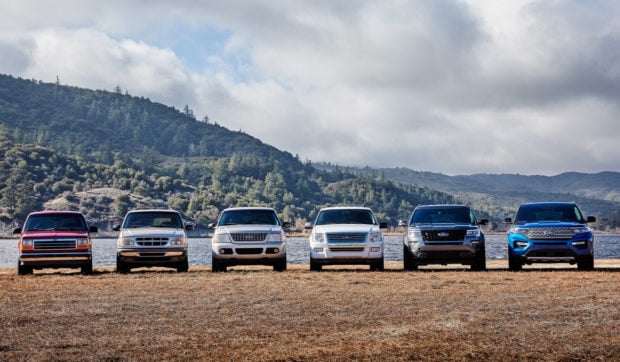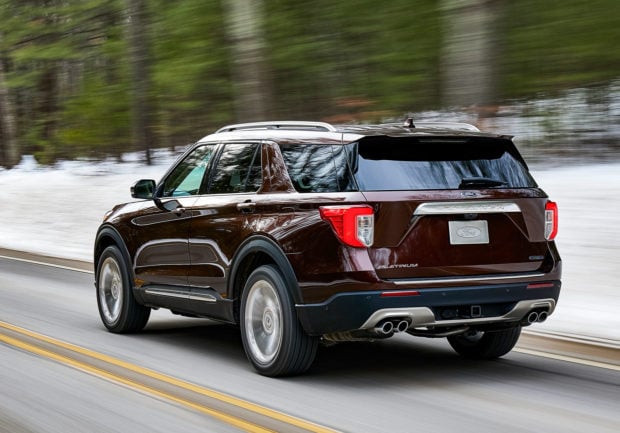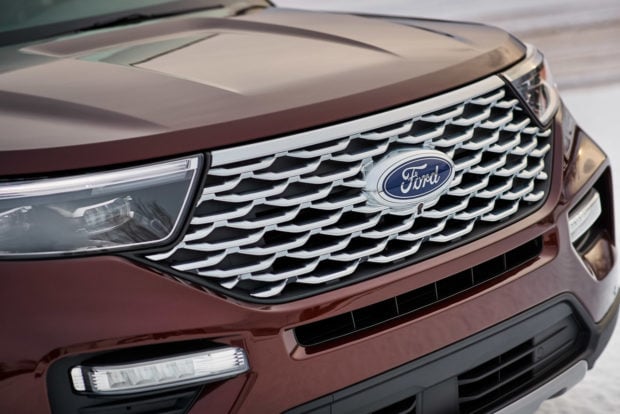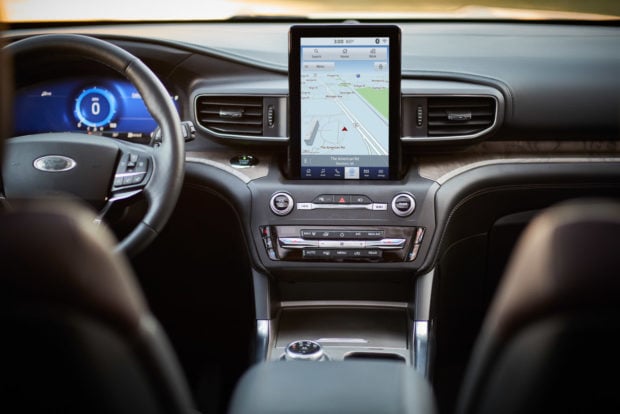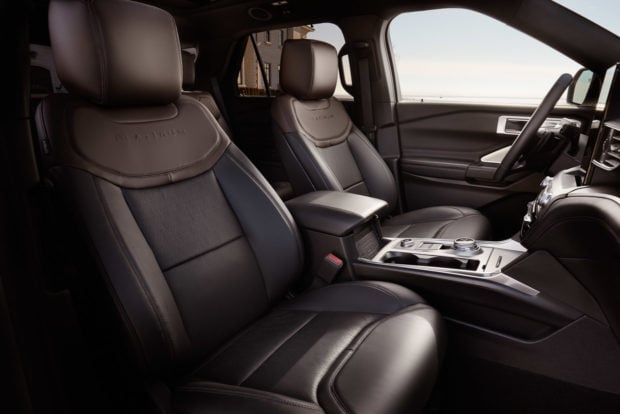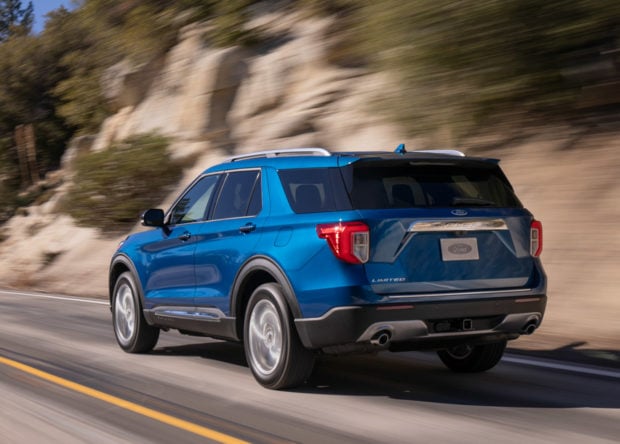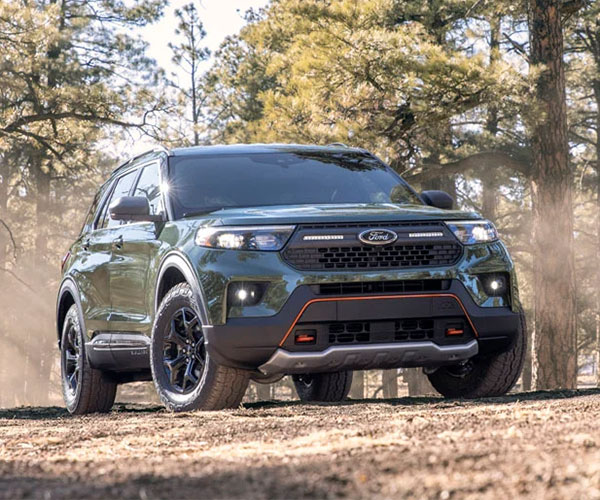2020 Ford Explorer Gets More Power, Tech, Towing, and Cargo Space
2019 | ford | ford explorer
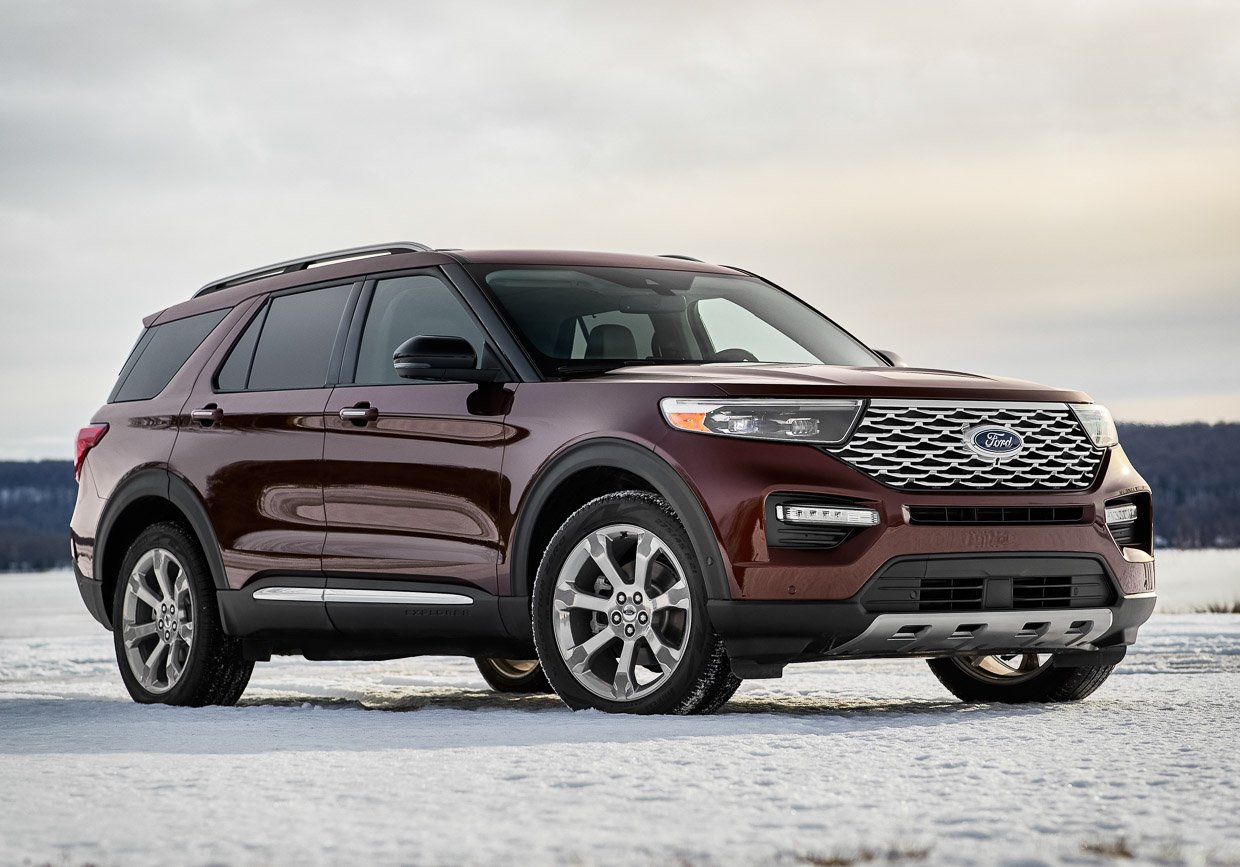
The Ford Explorer was the vehicle that really kicked off America’s fascination with SUVs. First released back in 1990, the Explorer has been wildly successful throughout its five generations, having transformed from a rugged, truck-based vehicle, to a more modern and premium daily driver that still retains the capabilities of the original. Now we have our first look at the all new 6th-generation Explorer, due in dealers later in 2019 as a 2020 model.
Assembled right here in Ford’s Chicago, Illinois plant, new 2020 Explorer is the first vehicle to build on Ford’s new CD6 platform, a modular architecture that is expected to support a variety of drivetrain and engine configurations for midsize and fullsize vehicles, and is currently rumored to be the platform of choice for the 2021 Mustang. This model will be available in rear-wheel drive or four-wheel drive configurations. This is a return to form for the Explorer, after the prior generation came in front-wheel drive or all-wheel drive options. This change should mean better overall handling both on- and off-road.
The new Explorer has a more modern, angular, and athletic look than ever before, and is designed to offer a sportier ride this time out. Coming standard on Platinum trim levels, the 3.0-liter turbocharged EcoBoost V6 offers up some impressive numbers, making 365 hp and 380 lb-ft. of torque, when run on 93-octane fuel. Base, XLT, and Limited Explorers get a 2.3-liter turbocharged EcoBoost I4 that produces 300 hp and 310 lb-ft. of torque. All models will come with a 10-speed automatic transmission.
Ford has dramatically streamlined the interior of the Explorer this time out, with sleek, smooth lines across the dashboard, a clean and minimal center console with a dial-based shifter for improved storage access. The big highlight here is the available 10.1″ portrait style capacitive touchscreen display, which offers a tablet-like user experience. The system runs atop SYNC 3, and has Apple CarPlay and Android Auto integration.
There are lots of useful features available inside the cabin as well, including up to four USB ports – including the newer, faster-charging Type C ports, a wireless charging pad, up to three 12-volt outlets, a 110-volt outlet, and a 10 device Wi-Fi hotspot. A 980-watt, 14-speaker B&O audio system is available as an option.
For 2020, the Explorer gets up to 5,600 pounds of towing capacity with the 3.0-liter V6, and up to 5,300 pounds of towing capacity with the 2.3-liter I4 and trailer towing package. With the seats folded down, maximum cargo capacity has increased from 81.7 to 87.8 cubic feet. There are also improvements in headroom, hip room, and shoulder room across the board, though it appears that both the second and optional third rows have just a tiny bit less legroom this year.
Each 2020 Expedition will come standard with the Ford Co-Pilot 360 driver-assist tech suite, which includes pre-collision assist with automatic emergency braking and pedestrian detection, forward collision warning and dynamic braking, blind spot monitors with cross-traffic alert, a lane-keeping system, a rearview camera with built-in lens cleaner, and automatic headlamps with auto high-beams. While adaptive cruise control isn’t standard, it is available as an option, and now includes speed sign recognition tech to adjust its maximum speed accordingly.
Ford has yet to announce official pricing or a street date for the 2020 Explorer, but their press release indicates a modest $400 increase for more than a dozen new standard features, so we shouldn’t expect a big difference from the 2019 model year pricing.






